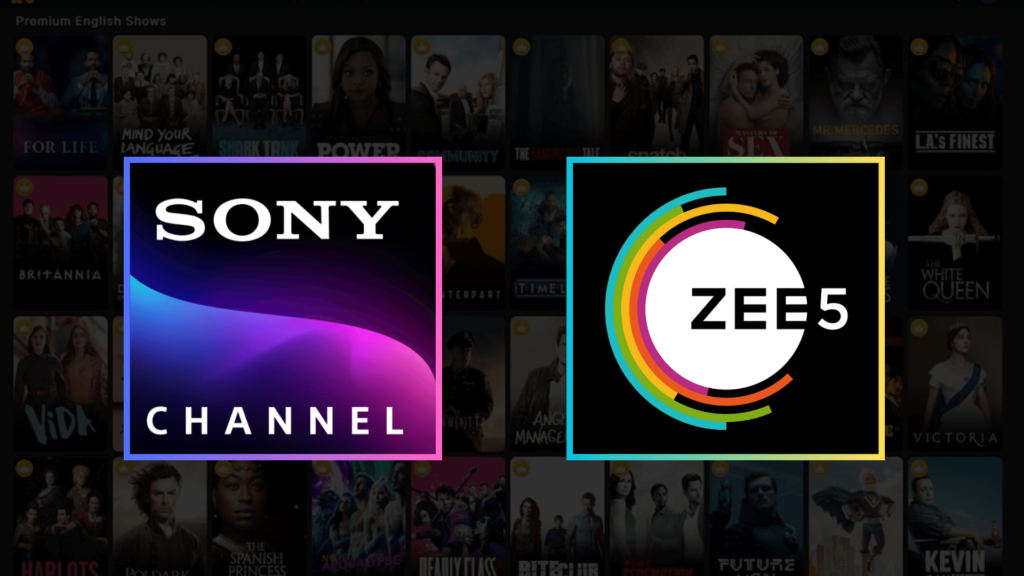Imagine two entertainment giants teaming up to create something even more spectacular. That’s precisely what’s happening with the Zee-Sony merger. In this captivating partnership, Zee Entertainment Enterprises (ZEEL) and Sony Pictures Networks India (Sony India) are coming together to redefine the world of entertainment. It’s like the perfect recipe, combining your favorite ingredients to make an even more delicious dish.
In this article, we’ll reveal the story behind the merger, break down the intricacies, and discover how it’s set to impact the entertainment world. Get ready to dive into the fascinating world of the Zee-Sony merger, where two major players are joining forces to create a whole new level of entertainment magic.
The Birth of the Merger
The announcement of the merger between Sony Pictures Networks India (SPNI) and Zee Entertainment Enterprises (ZEEL) in September 2021 marked a significant turning point in the Indian entertainment industry.
Both companies decided to join forces in a 50:50 partnership, creating a new entity known as Sony Pictures Networks India (SPNI) with ZEEL. The merger aimed to form one of the largest entertainment networks in India and the subcontinent.
The Rationale Behind the Merger
- Market Dominance: One of the primary reasons behind this merger was the pursuit of market dominance. India’s vast and diverse media and entertainment market presented immense opportunities, but also fierce competition. The merger allowed both companies to pool their resources and content libraries, making them a formidable force in the industry.
- Synergy in Content: Sony and Zee both had extensive content libraries, which they could now leverage more effectively through the merger. This synergy enabled the new entity to cater to a wide array of audiences, offering content in multiple languages and genres.
- Cost Optimization: Mergers often lead to cost savings through economies of scale. By merging, the companies could reduce operational costs, streamline their operations, and compete more effectively in a price-sensitive market.
- Global Expansion: The merger enabled the new entity to explore international opportunities and expand its presence globally. Sony’s global reach, combined with Zee’s strong foothold in the Indian market, created a unique synergy for international growth.
Zee-Sony Merger – How the Shares and Profits Divided
In the exciting world of the Zee-Sony merger, let’s break down how the shares and profits are being divided in a simple way.
So, imagine Zee Entertainment Enterprises (ZEEL) and Sony Pictures Networks India (Sony India) decided to merge. Initially, the merger ratio was set at 61.25% in favor of ZEEL. That means ZEEL was getting a bigger piece of the merger pie.

To make things even more interesting, the people who supported ZEEL agreed not to compete with the new, combined company. As a thank-you, Sony India’s owners agreed to give up about 2% of their stake in the new company.
Now, here’s the family twist: The Subhash Chandra family, who started ZEEL, would own 4% of the new company. And they might even increase that to 20%! To do this, they sold their ZEEL shares to pay off a big loan they took for some projects that didn’t go as planned.
Although Sony’s owners can pick most of the board members, Punit Goenka, ZEEL’s CEO and MD, will lead the new company. But to do that, the board, directors, and shareholders all need to agree.
So, the Zee-Sony merger is like a puzzle, with different pieces being put together to create a new, exciting picture in the world of entertainment.
Challenges Faced
The merger of two media giants is a complex endeavor. Several challenges had to be addressed for the successful integration of Sony and Zee:
- Regulatory Approval: Any merger of this scale requires regulatory approvals, and the Sony-Zee merger was no exception. The Competition Commission of India (CCI) had to ensure that the merger did not result in monopolistic behavior or adversely affect competition in the market.
- Cultural Integration: Mergers often lead to clashes in corporate culture. The new entity needed to align the cultural values and work processes of both companies to create a harmonious and productive environment.
- Integration of Workforces: Combining the workforces of two large organizations can be a daunting task. Issues related to roles, responsibilities, and potential redundancies had to be managed carefully.
- Content Licensing Agreements: The merger brought about the challenge of renegotiating content licensing agreements with various content creators and production houses.
Benefits and Impact of Sony and Zee merger
The Sony and Zee merger yielded several benefits and had a considerable impact on the Indian entertainment industry:
- Enhanced Content Portfolio: The new entity boasts a vast and diverse content library, spanning various genres and languages. This positions them as a one-stop entertainment destination for a wide range of audiences.
- Market Leadership: The merger solidified the new entity’s position as a market leader in India’s media and entertainment industry. They now have the resources to compete more effectively with global streaming giants like Netflix and Amazon Prime Video.
- Improved International Reach: The combination of Sony’s global presence and Zee’s strong domestic presence allowed the new entity to explore international markets more aggressively.
- Cost Optimization: By consolidating operations and reducing duplication, the merger resulted in cost savings and operational efficiencies.
- Innovation and Technology: The merger also opened doors for innovation and the integration of advanced technologies to enhance user experiences.
Challenges and Concerns while Sony and Zee merger
While the Sony and Zee merger holds great promise, it also raised concerns and challenges:
- Competitive Landscape: The merger could potentially reduce competition in the market, which might not be in the best interest of consumers.
- Content Monopoly: The new entity’s control over a vast content library could lead to concerns about a content monopoly.
- Job Redundancies: Mergers often result in job redundancies as roles overlap. This can be a point of concern for the employees of both companies.
- Content Creation: The merger’s focus on consolidation could potentially reduce investment in new and innovative content creation.
Future Prospects
The Sony and Zee merger represents a significant shift in the Indian media and entertainment industry. It has the potential to reshape the industry landscape in the following ways:
Increased Competition:
The merger could encourage other players to explore similar alliances to remain competitive, which may lead to more mergers and acquisitions in the sector.
Global Expansion:
The combined strengths of Sony and Zee could help them expand into international markets more effectively, challenging global streaming giants.
Diverse Content:
The new entity can cater to a broader spectrum of audiences by offering content in multiple languages, genres, and formats.
Technological Innovation:
With increased resources and a focus on innovation, the merger could drive the adoption of cutting-edge technologies in the entertainment industry.
Some Related Posts
Wrapping Up
The Sony and Zee merger is a groundbreaking development in the Indian media and entertainment sector. While it comes with significant advantages in terms of market dominance, content portfolio, and cost optimization, it also poses challenges related to competition and job redundancies.
The long-term impact of this merger remains to be seen, but it undoubtedly marks a transformative moment in the industry. As the media landscape continues to evolve, such mergers will play a crucial role in shaping the future of entertainment for audiences worldwide.
Frequently Asked Questions (FAQs)
Q1. What is the Zee-Sony merger?
The Zee-Sony merger is a strategic partnership between Zee Entertainment Enterprises (ZEEL) and Sony Pictures Networks India (Sony India) to create a new entertainment conglomerate.
Q2. What is the merger ratio?
The merger ratio initially favored ZEEL at 61.25%, meaning ZEEL shareholders would have a larger stake in the combined entity.
Q3. Why did Sony India’s promoters give up a part of their stake in the merger?
Sony India’s promoters agreed to transfer about 2% of their interest in the merged entity as a gesture of gratitude to ZEEL backers for their support and to encourage them not to compete with the new entity.
Q4. What is the Subhash Chandra family’s role in the merger?
The Subhash Chandra family, founders of ZEEL, will own 4% of the merged company. They also have the option to increase their stake to 20%.
Q5. How did the Subhash Chandra family finance their 4% stake?
The family liquidated their ZEEL shareholding to repay approximately Rs 13,000 crore in loans from Indian banks. This debt was incurred due to failed diversification projects, including infrastructure ventures.







